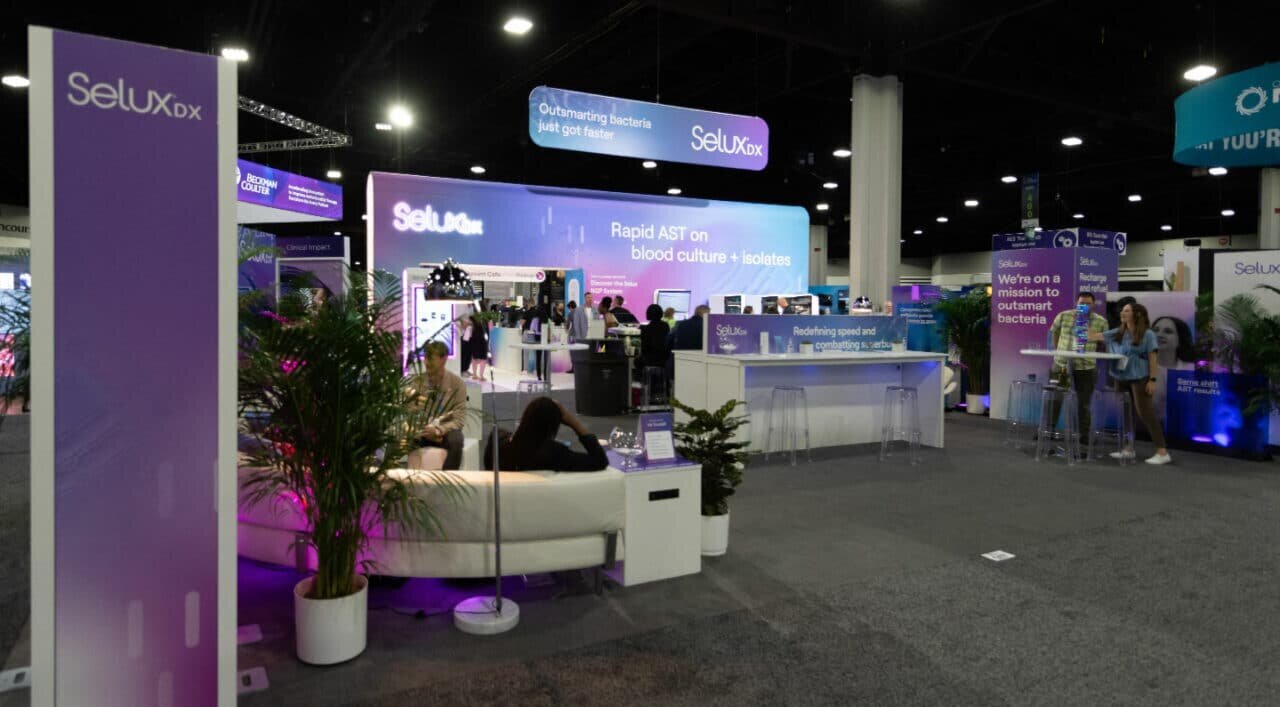Slate360 Provides Insights on How Compelling Stories Connect More Effectively at Tradeshows and the Pitfalls to Avoid

In the fast-paced, data-saturated environment of a healthcare tradeshow, it’s easy to get lost in the commotion. Every exhibitor is competing for the attention of healthcare professionals with bigger screens, brighter graphics, and bold claims about clinical efficacy.
But what if the key to standing out isn’t about being the loudest, but about being the most human? The answer lies in mastering brand storytelling in healthcare, a powerful strategy that transforms a standard product pitch into a memorable, meaningful experience.
At its core, a tradeshow exhibit is a storytelling container. It’s a unique moment where your brand, your competitors, and your most important audiences are all in the same space.
This is your chance to emphasize your healthcare brand’s true differentiation—not just by brand aesthetic or calls to action, but by telling a story that resonates on a deeper, more emotional level. Storytelling is one of the most effective event marketing strategies for healthcare brands. By weaving a compelling narrative through your event marketing plan, you can build trust, foster genuine connections, and make a lasting impact that clinical data alone simply can’t achieve.
The Neuroscience of Storytelling in Healthcare Event Marketing
To understand why storytelling is so effective, we have to look at the neuroscience of how our brains process information. When presented with facts and figures, only the language-processing parts of the brain are activated.
However, when we hear a story, our brains react as if we are experiencing the events ourselves. This creates a rich, full-brain experience.
Descriptive language in a story can activate the sensory cortex, while hearing about actions can fire up the motor cortex. This neurological engagement makes information more memorable and relatable. Additionally, character-driven stories can trigger the release of oxytocin, a neurochemical that enhances our sense of empathy and connection.
For healthcare brands, this is invaluable. A story about a patient’s journey can make complex science feel personal and urgent, helping busy professionals connect with the human impact of a new therapy or medical device in a way that a data sheet never could. This creates a foundation of empathy, turning a clinical discussion into a human conversation.
From Emotionless Entity to Engaged Partner
Trust is the currency of the healthcare industry, and effective healthcare marketing storytelling is the key to earning it. Patients and providers alike need to have confidence in the brands they engage with.
Storytelling humanizes a company, shifting the way attendees perceive it from a faceless corporate entity to a dedicated partner in patient care. An authentic narrative, whether it’s about the company’s founding mission or the challenging journey of drug development, provides a window into the values and people behind the brand. This is how storytelling builds trust in healthcare marketing.
In our experience, the most compelling booths create an environment where these human connections can flourish. The story sets the tone, creating a platform where doctors, researchers, and company representatives can talk openly about patient challenges and collaborative solutions.
An exhibit that feels like a welcoming oasis encourages longer, more meaningful conversations. This extended dwell time is a critical metric. It’s not just about how many badges you scan, but about the quality of the interactions you foster.
A compelling tale draws people in and gives them a reason to stay, listen, and share.
Translating Narrative Into Physical Space
A brand’s story shouldn’t be confined to a video loop or a brochure. Effective storytelling in medical marketing should be embedded in the very architecture of the exhibit. The most successful tradeshow experiences are those that cohesively merge the brand campaign with the physical design.
The booth itself becomes a tangible, three-dimensional backdrop for the story.
For example, when designing an exhibit for a surgical device that excelled at controlling fluids, a powerful way to tell that story was to integrate a massive, controlled waterfall directly into the space. This wasn’t a gimmick—it was a physical manifestation of the product’s core benefit, creating an instant, intuitive understanding for every visitor.
In another instance, a creative concept was developed that called for turning a client’s 2D marketing campaign into a 3D sculpture in their booth, thereby bringing the story to life. The idea of displaying a museum-quality artwork on the show floor captured the client’s imagination and demonstrated the power of narrative-driven design.
Putting Authentic Voices in the Spotlight
While architectural metaphors are powerful, nothing connects like a genuine human voice. Incorporating firsthand experiences from patients, caregivers, and physicians is the gold standard of healthcare storytelling.
By providing details on patient engagement, storytelling creates an unforgettable emotional anchor for your brand message.
There are several ways to bring these voices into your exhibit.
Live experiences. Having patient advocates, doctors, or caregivers in the booth to share their journeys can be incredibly impactful. Patient storytelling at medical conferences and events offers an unparalleled level of authenticity.
Immersive media. The practice of using immersive media in healthcare events, such as large-scale video walls showing patient testimonials or virtual reality simulations that place an attendee in a patient’s shoes, can create deeply engaging experiences.
Artistic interpretation. Sometimes the most profound stories are told without words. We have seen exhibits featuring art galleries where patients were asked to paint their feelings about their condition, such as chronic pain. The resulting images provided a visceral, emotional entry point for conversations with physicians about the patient experience.
Navigating Common Healthcare Storytelling Pitfalls
Integrating storytelling into your event strategy requires a thoughtful approach. One of the most common mistakes we see is investing heavily in technology without a compelling story to tell. An enormous, high-resolution LED wall is just an expensive monitor if the content is uninspired.
The story must always come first.
In fact, communicating a great story doesn’t always require advanced or expensive technology. Some of the most effective engagements are surprisingly low-tech. For a brand campaign centered on breaking down barriers, a simple, hands-on Jenga-style game at a tabletop can reinforce the message just as effectively as a complex digital interactive. The key is authenticity and alignment with the core narrative.
Finally, it’s essential to work within regulatory and compliance frameworks. In the healthcare space, storytelling must be both authentic and responsible. The brand’s internal regulatory team provides the necessary guardrails, and a strong creative strategy is developed within those guidelines to ensure the story is told powerfully and appropriately, resulting in compliance-friendly storytelling for healthcare brands.
Connect More Effectively at Your Next Healthcare Tradeshow
Ultimately, the future of healthcare event marketing lies in creating experiences that inform, engage, and inspire. By shifting the focus from product features to human stories, you can create a powerful and lasting connection that resonates long after the tradeshow doors have closed.
If you have questions about how compelling narratives can bring your offerings to life, please reach out to us.
About Slate360
Our team of seasoned healthcare industry pros crafts unique, immersive exhibit experiences that attract attendees and create lasting impressions of clients and their offerings. We work as an extension of a client’s team to streamline strategy development, execution, and analytics and to ensure an onsite or virtual trade show presence furthers their marketing objectives. https://slate360inc.com/
Slate360 Media Contact
Pam Laferriere, 657-204-1916
Information contained on this page is provided by an independent third-party content provider. XPRMedia and this Site make no warranties or representations in connection therewith. If you are affiliated with this page and would like it removed please contact [email protected]



